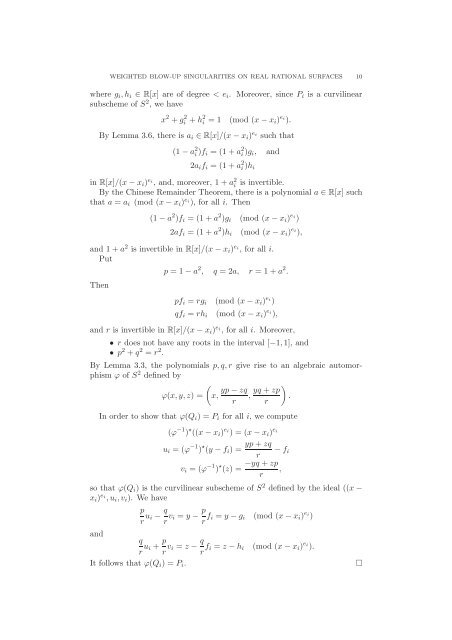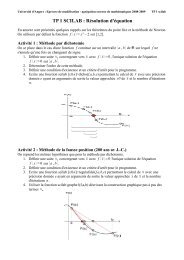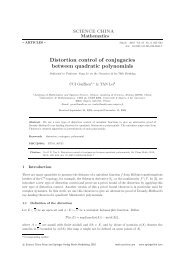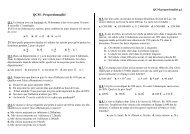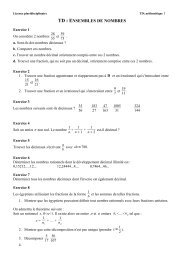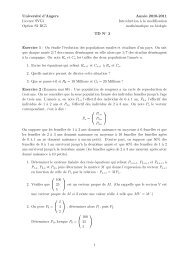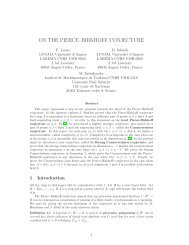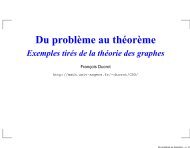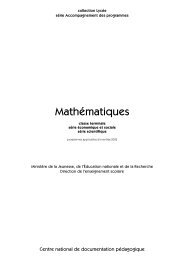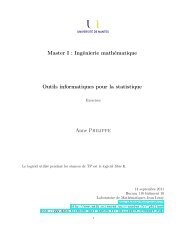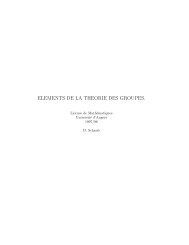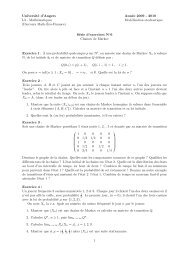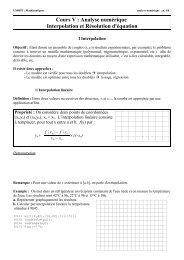automorphisms of real rational surfaces and weighted blow-up ...
automorphisms of real rational surfaces and weighted blow-up ...
automorphisms of real rational surfaces and weighted blow-up ...
Create successful ePaper yourself
Turn your PDF publications into a flip-book with our unique Google optimized e-Paper software.
WEIGHTED BLOW-UP SINGULARITIES ON REAL RATIONAL SURFACES 10<br />
where gi,hi ∈ R[x] are <strong>of</strong> degree < ei. Moreover, since Pi is a curvilinear<br />
subscheme <strong>of</strong> S 2 , we have<br />
x 2 + g 2 i + h2 i = 1 (mod (x − xi) ei ).<br />
By Lemma 3.6, there is ai ∈ R[x]/(x − xi) ei such that<br />
(1 − a 2 i )fi = (1 + a 2 i )gi, <strong>and</strong><br />
2aifi = (1 + a 2 i)hi<br />
in R[x]/(x − xi) ei , <strong>and</strong>, moreover, 1 + a 2 i is invertible.<br />
By the Chinese Remainder Theorem, there is a polynomial a ∈ R[x] such<br />
that a = ai (mod (x − xi) ei ), for all i. Then<br />
(1 − a 2 )fi = (1 + a 2 )gi (mod (x − xi) ei )<br />
2afi = (1 + a 2 )hi (mod (x − xi) ei ),<br />
<strong>and</strong> 1 + a 2 is invertible in R[x]/(x − xi) ei , for all i.<br />
Put<br />
Then<br />
p = 1 − a 2 , q = 2a, r = 1 + a 2 .<br />
pfi = rgi (mod (x − xi) ei )<br />
qfi = rhi (mod (x − xi) ei ),<br />
<strong>and</strong> r is invertible in R[x]/(x − xi) ei , for all i. Moreover,<br />
• r does not have any roots in the interval [−1,1], <strong>and</strong><br />
• p 2 + q 2 = r 2 .<br />
By Lemma 3.3, the polynomials p,q,r give rise to an algebraic automorphism<br />
ϕ <strong>of</strong> S2 defined by<br />
<br />
yp − zq<br />
ϕ(x,y,z) = x, ,<br />
r<br />
yq + zp<br />
<br />
.<br />
r<br />
In order to show that ϕ(Qi) = Pi for all i, we compute<br />
(ϕ −1 ) ⋆ ((x − xi) ei ) = (x − xi) ei<br />
ui = (ϕ −1 ) ⋆ (y − fi) =<br />
vi = (ϕ −1 ) ⋆ (z) =<br />
yp + zq<br />
− fi<br />
r<br />
−yq + zp<br />
,<br />
r<br />
so that ϕ(Qi) is the curvilinear subscheme <strong>of</strong> S 2 defined by the ideal ((x −<br />
xi) ei ,ui,vi). We have<br />
p<br />
r ui − q<br />
r vi = y − p<br />
r fi = y − gi (mod (x − xi) ei )<br />
<strong>and</strong><br />
q<br />
r ui + p<br />
r vi = z − q<br />
r fi = z − hi (mod (x − xi) ei ).<br />
It follows that ϕ(Qi) = Pi.


